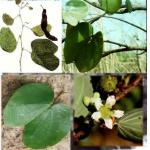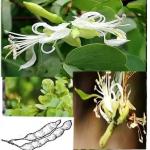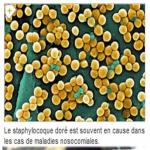Camellia sinensis or Teier.
1-Identification
French name: Tea or Green Tea.
Scientific name: Camellia sinensis.
Family: Thaceae
Vernacular names: Tea
Active substances: theobromine, caffeine and theophylline
Parts Used: Sheets
Description
Tea trees are evergreen, up to 10 m to 15 m, and up to 20 m for some varieties. Its height is limited by the size in culture. There are several hundred-year-old wild tea trees over 30 m long. Tea trees grow on acidic soils between 1,000 and 2,000 meters above sea level, in a hot and humid climate. The oldest tea plant in the world (1800 years old) is located in Puer in Yunnan province in China. The province of Fengqing boasts the world's oldest tea tree, 3750 years old and with a 68 m3 foliage. The alternate, persistent leaves have an elongated, elliptical shape 4 to 15 cm long, 2 to 7 cm wide. They are shiny, dark green, relatively tough, with a fairly thick texture. The petiole is short, from 4 to 10 mm. The base is cunous, the apex is acute to acuminate, and margins are sawn. The tea tree flowers are white to light yellow, and are between 2.5 and 4 cm in diameter. Solitary or in small groups of 3 to 4, they have five persistent sepals, five petals, sometimes more up to 7 or 8, of light yellow or cream-white color, and very many yellow stamens often welded together. The ovary is trilocular. The fruits are capsules with loculicidal dehiscence approximately 1.5-3 cm in diameter. The seeds can be pressed to give an oil. The different types of tea are obtained from Camellia sinensis and according to the method of treatment from the leaves, we get green, white, black tea etc.
Habitat and origin:
Tea tree, or green tea, or simply tea (Camellia sinensis), is an original shrub from China where it has been known since antiquity. It was imported from China in the sixteenth century by traders in the Far East and in Europe, as a stimulating and digestive plant. Tea is now the world's most drunk drink after water and coffee. It is widely cultivated all over the world for its leaves. Tea is first Chinese before being popular and The term Camellia sinensis means word for word "Chinese camellia".
2-Properties
Stimulant, tonicardiac, bronchodilator, aromatic, diuretic and digestive.
3-Therapeutic indications
Fatigue, fever, headache, migraine, rheumatism, obesity, fluid retention, influenza, hypotension, circulation problems, etc.
4- uses
—Fatigue
A cup of tea Sweet with brown sugar or honey preferably is a good stimulant that keeps the whole body awake for a few hours.
—Migraine, headache, pain, fever, flu.
A cup of tea at lemon sugar-free does good in the head, lowers fever and relieves rheumatic pain.
.—Hypotension and diuretic
A good cup of tea is a cardiac tonic for hypotensive patients and a good diuretic. It's a good nervous system tonic. It activates brain function and wake the tired brain.
—Obesity.
Several cups of tea are taken every day, before or after meals and without meals.
—Asthma
A good cup of tea relieves asthmatics and relieves seizures.
NB: Tea is well balanced and healthy. With family, in groups, among friends, under the palaver tree, he happily replaces alcohol and tobacco.
Please reach us at http://wa.me//+22967546677
Click below to order clove oil
Book an appointment with lady feranmi on
Add a comment








